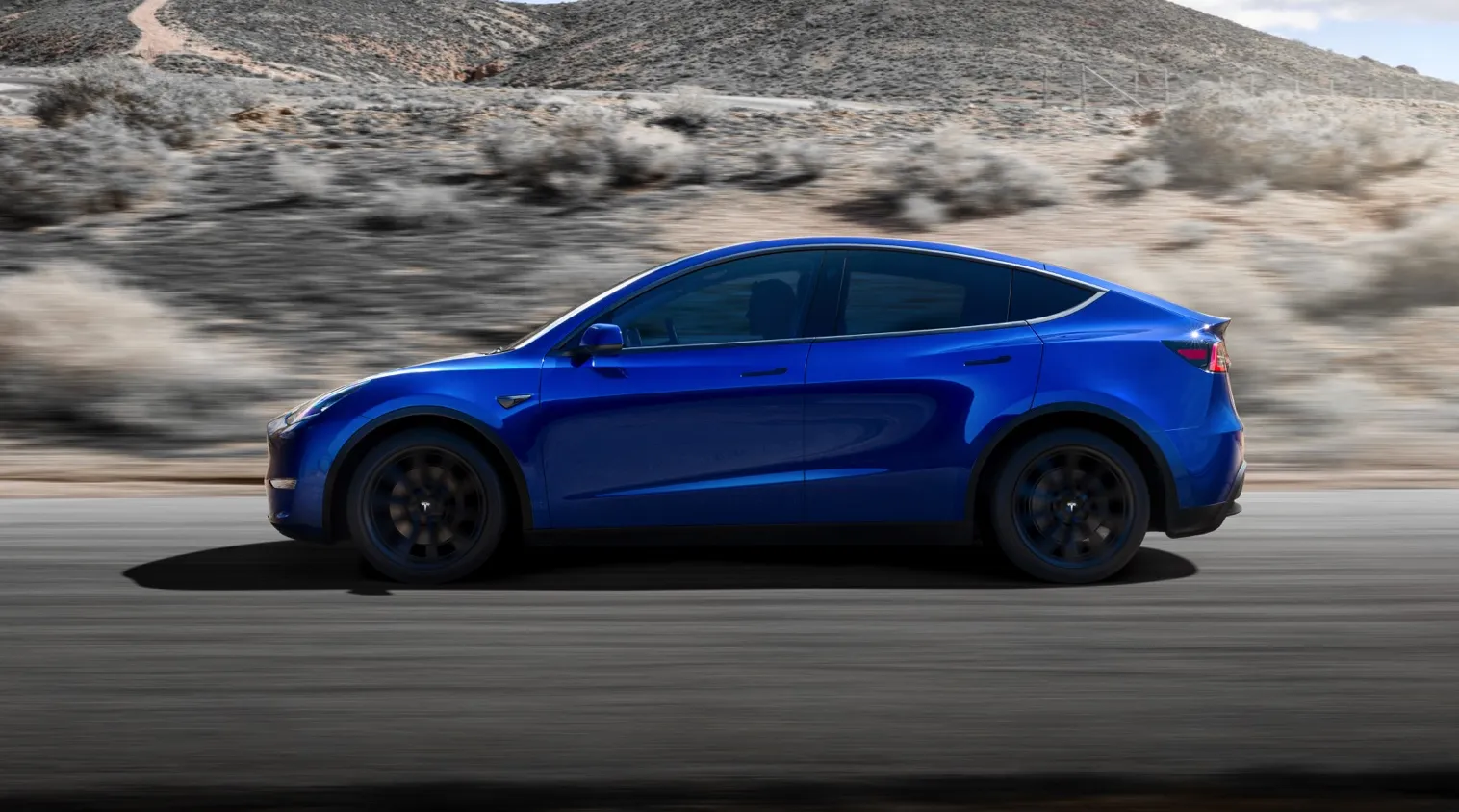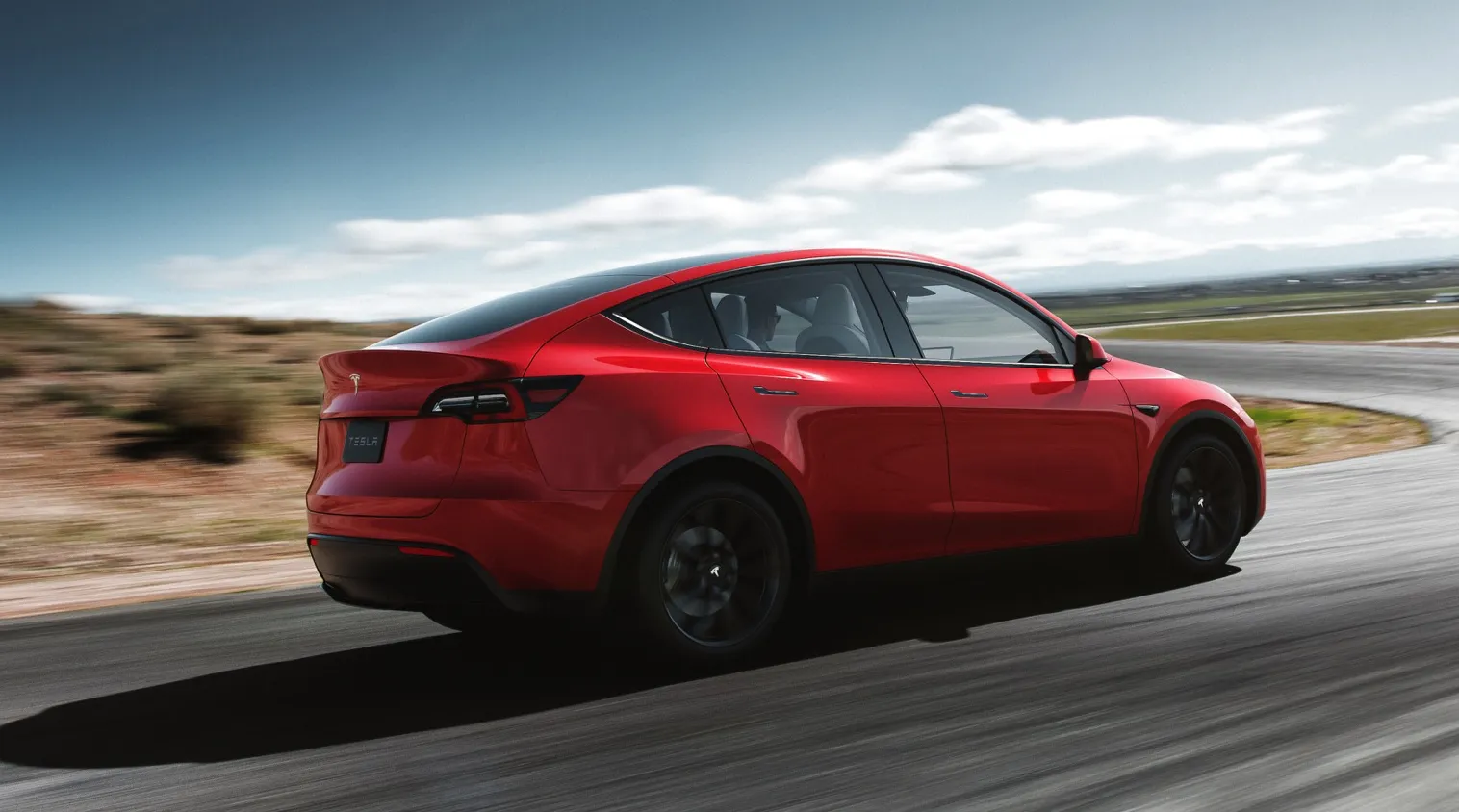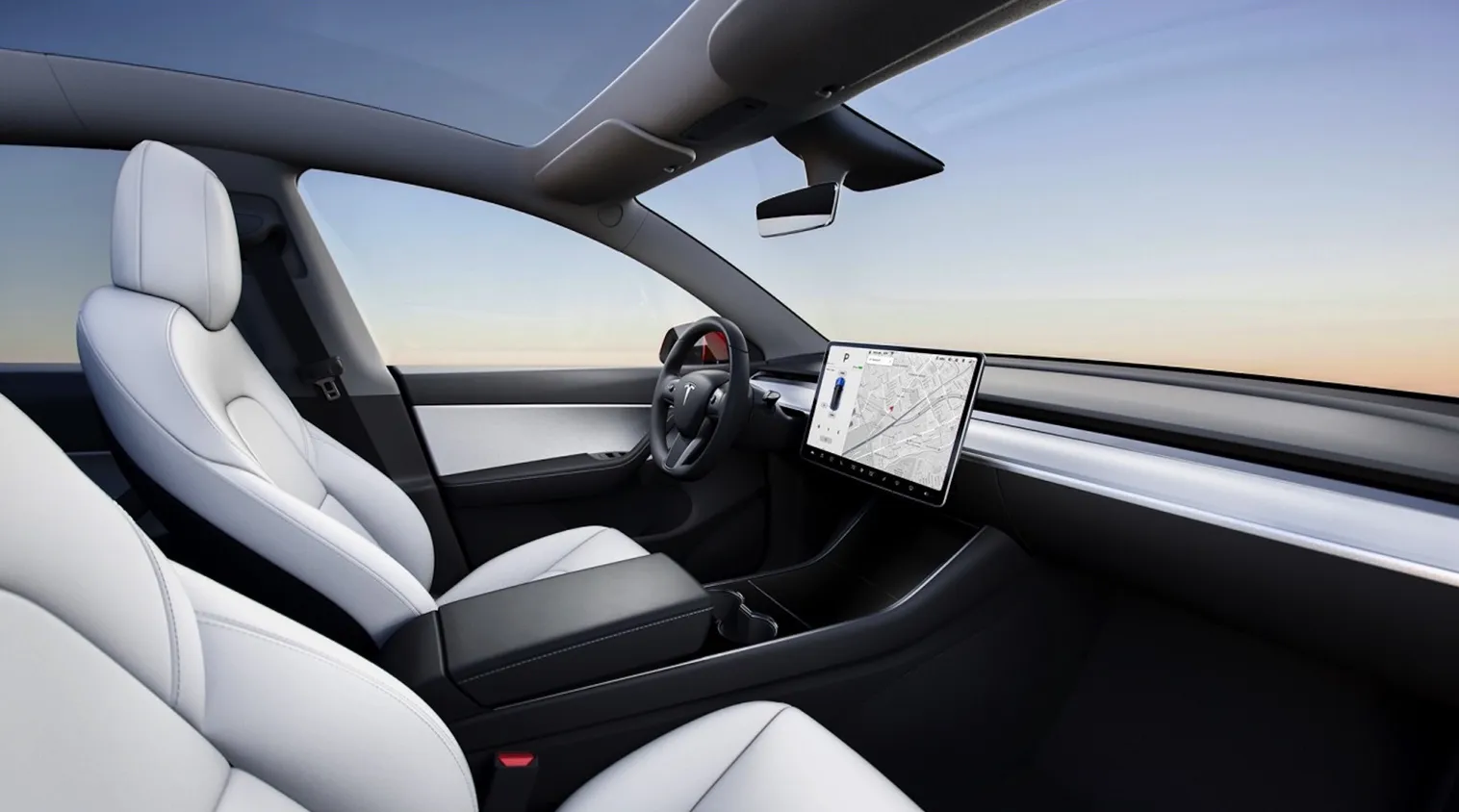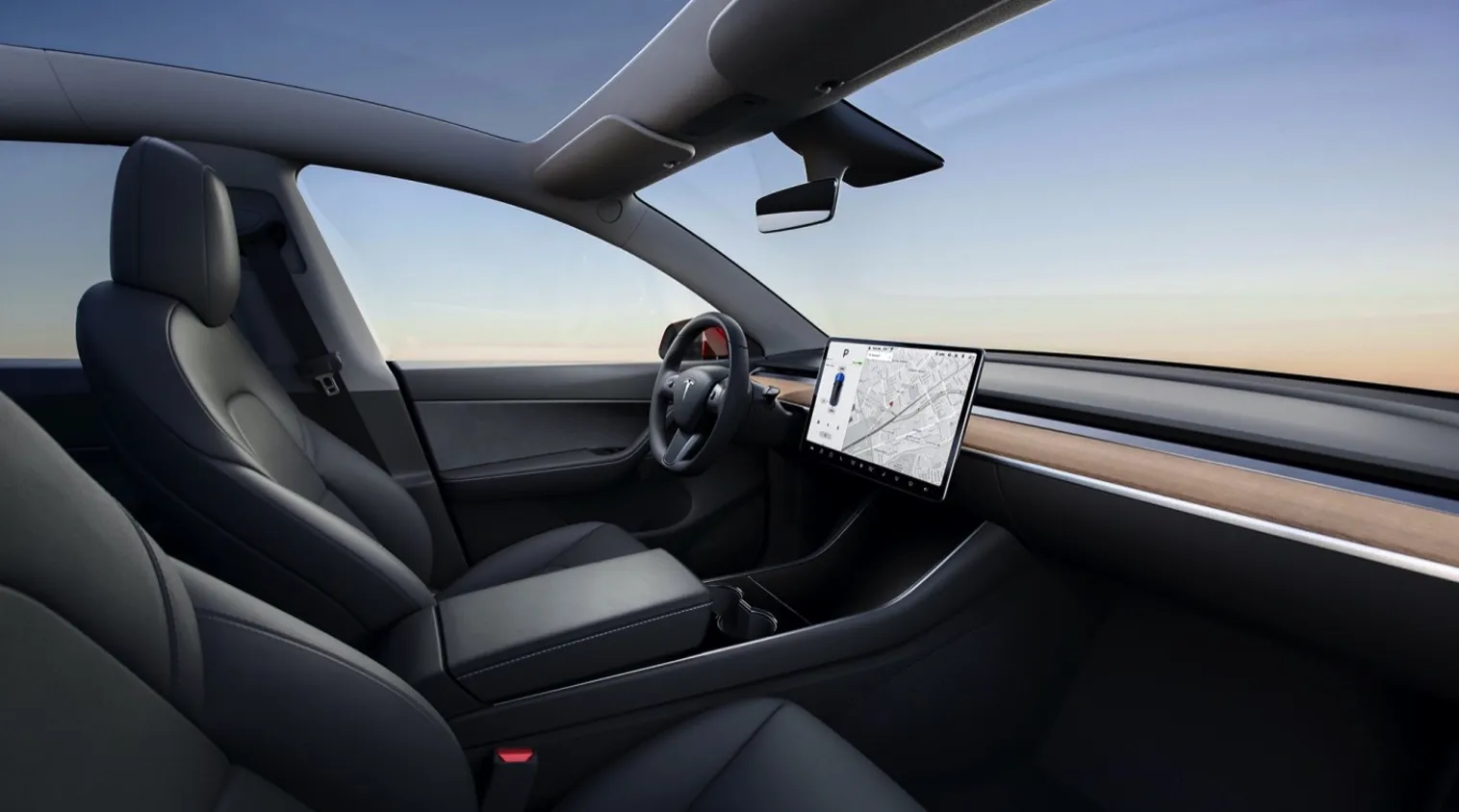Tesla Model Y Performance
Model: Tesla
- : 75.0 kWh *
- : 430 km *
- : 174 Wh/km *
Real Range Estimation
| City - Cold Weather * | 420 km |
| Highway - Cold Weather * | 310 km |
| Combined - Cold Weather * | 360 km |
between 310 - 625 km
| City - Mild Weather * | 625 km |
| Highway - Mild Weather * | 400 km |
| Combined - Mild Weather * | 495 km |
Performance
| Acceleration 0 - 100 km/h * | 3.8 sec |
| Top Speed | 250 km/h |
| Electric Range * | 430 km |
| Total Power | 393 kW (534 PS) |
| Total Torque * | 660 Nm |
| Drive | AWD |
Battery
| Nominal Capacity | 78.1 kWh |
| Battery Type | Lithium-ion |
| Number of Cells | 4416 |
| Architecture | 400 V |
| Warranty Period | 8 years |
| Warranty Mileage | 192,000 km |
| Useable Capacity* | 75.0 kWh |
| Cathode Material | NCM |
| Pack Configuration | 96s46p |
| Nominal Voltage | 357 V |
| Form Factor | Cylindrical |
| Name / Reference | LG M50 |
Bidirectional Charging (V2X / BPT)
Vehicle-to-Load (V2L)
| V2L Supported | No |
| Max. Output Power | - |
Vehicle-to-Home (V2H)
| V2H via AC Supported | No |
| Max. Output Power | - |
Vehicle-to-Grid (V2G)
| V2G via AC Supported | No |
| Max. Output Power | - |
Energy Consumption
EVDB Real Range
| Range * | 430 km |
| Vehicle Consumption * | 174 Wh/km |
WLTP Ratings
| Range | 514 km |
| Rated Consumption | 171 Wh/km |
| Vehicle Consumption | 146 Wh/km |
Dimensions and Weight
| Length | 4751 mm |
| Width | 1921 mm |
| Width with mirrors | 2129 mm |
| Height | 1624 mm |
| Wheelbase | 2890 mm |
| Weight Unladen (EU) | 2072 kg |
| Gross Vehicle Weight (GVWR) | 2532 kg |
| Max. Payload | 535 kg |
| Cargo Volume | 854 L |
| Cargo Volume Max | 2158 L |
| Cargo Volume Frunk | 117 L |
| Roof Load | 75 kg |
| Tow Hitch Possible | Yes |
| Towing Weight Unbraked | 750 kg |
| Towing Weight Braked | 1600 kg |
| Vertical Load Max | 72 kg |
Miscellaneous
| Seats | 5 people |
| Isofix | Yes, 2 seats |
| Turning Circle | 12.1 m |
| Platform | TESLA 3/Y |
| EV Dedicated Platform | Yes |
| Car Body | SUV |
| Segment | JD - Large |
| Roof Rails | No |
| Heat pump (HP) | Yes |
| HP Standard Equipment | Yes |
Home and Destination Charging (0 -> 100%)
Charging is possible by using a regular wall plug or a charging station. Public charging is always done through a charging station. How fast the EV can charge depends on the charging station (EVSE) used and the maximum charging capacity of the EV. The table below shows all possible options for charging the Tesla Model Y Performance. Each option shows how fast the battery can be charged from empty to full.
Europe
Charging an EV in Europe differs by country. Some European countries primarily use 1-phase connections to the grid, while other countries are almost exclusively using a 3-phase connection. The table below shows all possible ways the Tesla Model Y Performance can be charged, but some modes of charging might not be widely available in certain countries.
| Type 2 (Mennekes - IEC 62196) |
|---|
 |
| Charging Point | Max. Power | Power | Time | Rate |
|---|---|---|---|---|
| Wall Plug (2.3 kW) | 230V / 1x10A | 2.3 kW | 38h30m | 11 km/h |
| 1-phase 16A (3.7 kW) | 230V / 1x16A | 3.7 kW | 24 hours | 18 km/h |
| 1-phase 32A (7.4 kW) | 230V / 1x32A | 7.4 kW | 12 hours | 36 km/h |
| 3-phase 16A (11 kW) | 400V / 3x16A | 11 kW | 8h15m | 52 km/h |
| 3-phase 32A (22 kW) | 400V / 3x16A | 11 kW † | 8h15m | 52 km/h |
† = Limited by on-board charger, vehicle cannot charge faster.
Fast Charging (10 -> 80%)
Rapid charging enables longer journeys by adding as much range as possible in the shortest amount of time. Charging power will decrease significantly after 80% state-of-charge has been reached. A typical rapid charge therefore rarely exceeds 80% SoC. The rapid charge rate of an EV depends on the charger used and the maximum charging power the EV can handle. The table below shows all details for rapid charging the Tesla Model Y Performance.
- Max. Power: maximum power provided by charge point
- Avg. Power: average power provided by charge point over a session from 10% to 80%
- Time: time needed to charge from 10% to 80%
- Rate: average charging speed over a session from 10% to 80%
| Combined Charging System (CCS Combo 2) |
|---|
 |
| Charging Point | Max. Power | Avg. Power | Time | Rate |
|---|---|---|---|---|
| CCS (50 kW DC) | 50 kW | 45 kW † | 74 min | 240 km/h |
| Supercharger v2 Shared (75 kW DC) | 75 kW | 65 kW † | 51 min | 350 km/h |
| Supercharger v2 (150 kW DC) | 150 kW | 100 kW † | 33 min | 540 km/h |
| CCS (175 kW DC) | 175 kW | 110 kW † | 30 min | 600 km/h |
| Supercharger v3 (250 kW DC) | 250 kW | 124 kW † | 27 min | 660 km/h |
| CCS (350 kW DC) | 250 kW † | 124 kW † | 27 min | 660 km/h |
| This vehicle supports Autocharge |
|---|
| This vehicle does not support Plug & Charge |
† = Limited by charging capabilities of vehicle
Autocharge: allows for automatic initiation of a charging session at supported CCS charging stations.
Plug & Charge: allows for automatic initiation of a charging session at supported CCS charging stations in accordance with ISO 15118.
Actual charging rates may differ from data shown due to factors like outside temperature, state of the battery and driving style.




